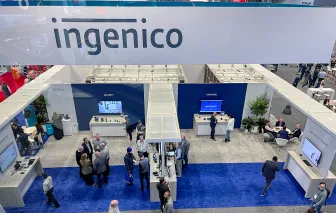If you needed evidence of the rise of cryptocurrency, you only have to look at the 2022 Super Bowl’s advertising. Of the many cryptocurrency-centric ads, Coinbase’s was so popular, it crashed its app within seconds. With crypto’s growing popularity, I’ve received a lot of questions on how it might impact retail, and in particular, the in-store payment experience.
Thus far, there has been little overlap between cryptocurrency and retail payments. For most consumers, crypto is still seen as an investment class more than a means of exchange. This is partly because the volatility in crypto value makes it hard to be sure of the price of goods purchased. But there are technical challenges to overcome too. Most crypto transactions, take at least 10 minutes to complete due to the design of the “proof of work” coin-mining model underlying most popular coins like Bitcoin. Whilst these two factors are irrelevant for an asset investment, it is obviously impractical to expect to wait for more than 10 minutes when you are queueing at a coffee counter and equally it is not reasonable to find that, by the time the barista has finished with the crema on your coffee, the cost has rocketed. Regardless of your business type, keeping a customer waiting 10 minutes to process a transaction is unacceptable.
From a merchant perspective, there is also a third challenge: The coffee bar owner is used to receiving a single, easy-to-digest consolidated statement for all transactions from the acquirer. Reconciling the takings is considerably harder when they also must consider a series of one-off transactions via the crypto route, let alone if they arrive not in dollars, but directly in the various cryptocurrencies they accept.
That said, there is a still small, but often wealthy and influential, market for crypto transactions and there are some innovative approaches to solving these three challenges.
How Do You Simplify Accepting Crypto In-Store?
The answer is to introduce a middle party which can act as an “exchange bureau,” confirming and committing the exchange rate for the duration of the transaction and processing it at the required speed for a point of sale – i.e., nearly instantly. This party, a Crypto Payment Service Provider (or CPSP), takes on the risk of the volatility and on whether there is a problem with the transaction, in return for which they normally make a margin on the spread, just as any other exchange bureau. If the CPSP settles the transaction via the acquirer, the merchant will see all their transactions (whether card or crypto) in a single report and receive the funds in a single payout along with the rest of the day’s takings.
Here's how it would work:
- The merchant shows prices in regular currency, say USD, but offers consumers the option to pay in crypto instead
- A consumer decides to make a purchase using, say Ether, instead of USD
- The merchant uses an Android device to obtain a real-time quote from CPSP, i.e., ETH/USD
- This rate is shown to the customer, along with the total price in Ether and is guaranteed to be fixed for 10 minutes
- If the consumer wishes to go ahead with the transaction, the terminal displays a QR code
- The consumer uses their own crypto wallet (many wallets are compatible) to scan the QR code that contains the receiving crypto address and agreed ETH-amount, and confirms the transaction using the phone’s inbuilt security to validate the consumer’s identity, e.g. via fingerprint or face ID
- The CPSP receives and checks the transaction and, if accepted, instantly sends a confirmation message to the merchant’s Android device in the form of a green tick mark
- The merchant now has a payment guarantee and can release the goods, certain that they will be paid out at the original USD amount
- Subsequently, the CPSP converts the ETH received back to USD and transfers the USD amount, together with the transaction details, to the acquirer
- The acquirer consolidates the crypto transactions with the rest of the day’s card and other alternative payment transactions, paying out to the merchant as a single, consolidated sum in USD
- The merchant can now offer crypto payments without the hassle of a separate set of reconciliations, at speed and with no currency risk
As cryptocurrency models start to overcome today’s transaction efficiency issues and the use of stablecoins and/or central bank digital currencies becomes more mainstream, we expect that this integration will become much simpler, allowing merchants to handle crypto transactions in much the same way that they handle any currency conversion transaction today.
If you’re interested in learning more about crypto and its future in retail payments, I’d be happy to chat.
Ian Benn is Head of Strategy and Market Development at Ingenico
Photo by Kanchanara on Unsplash











